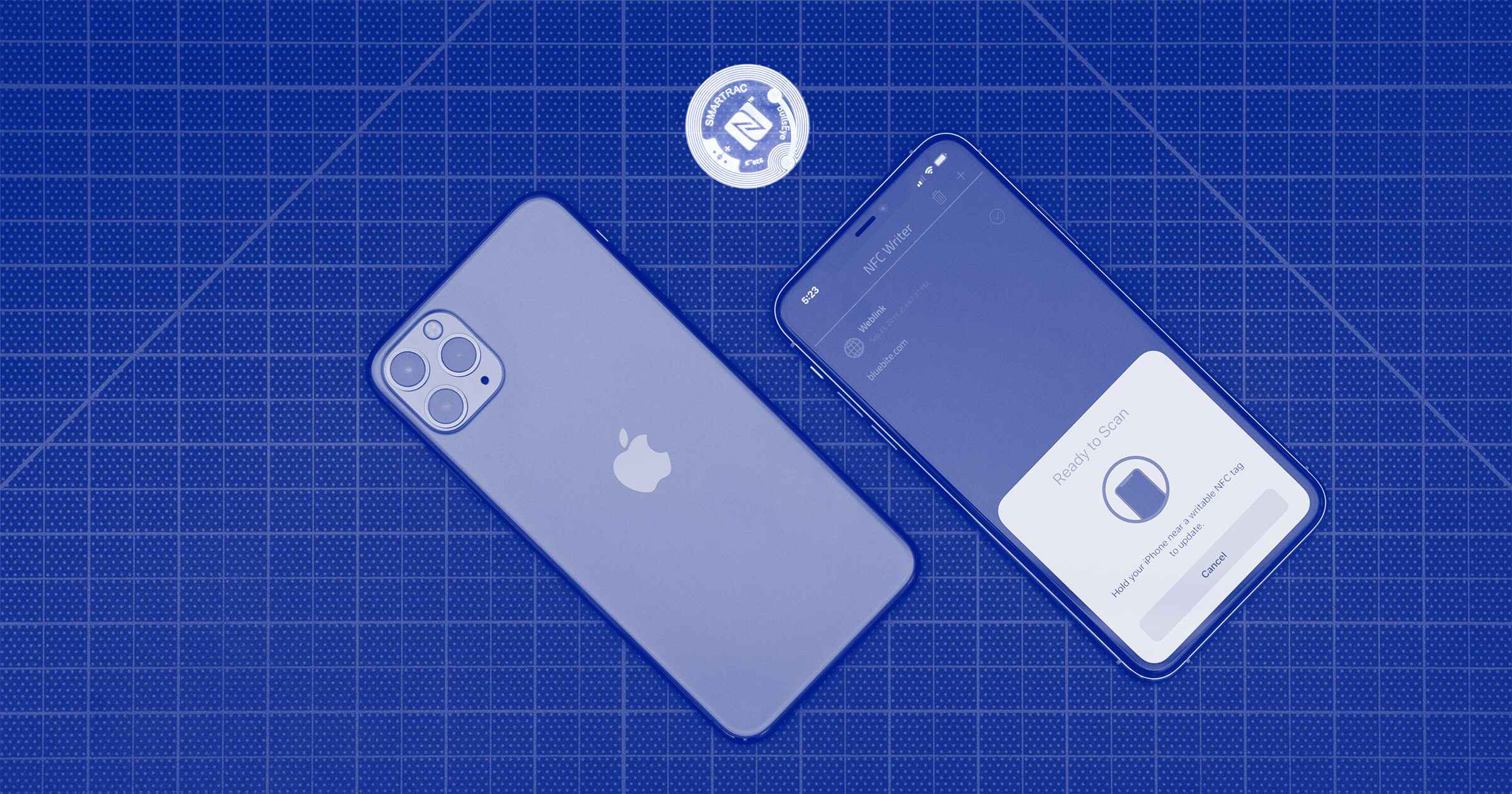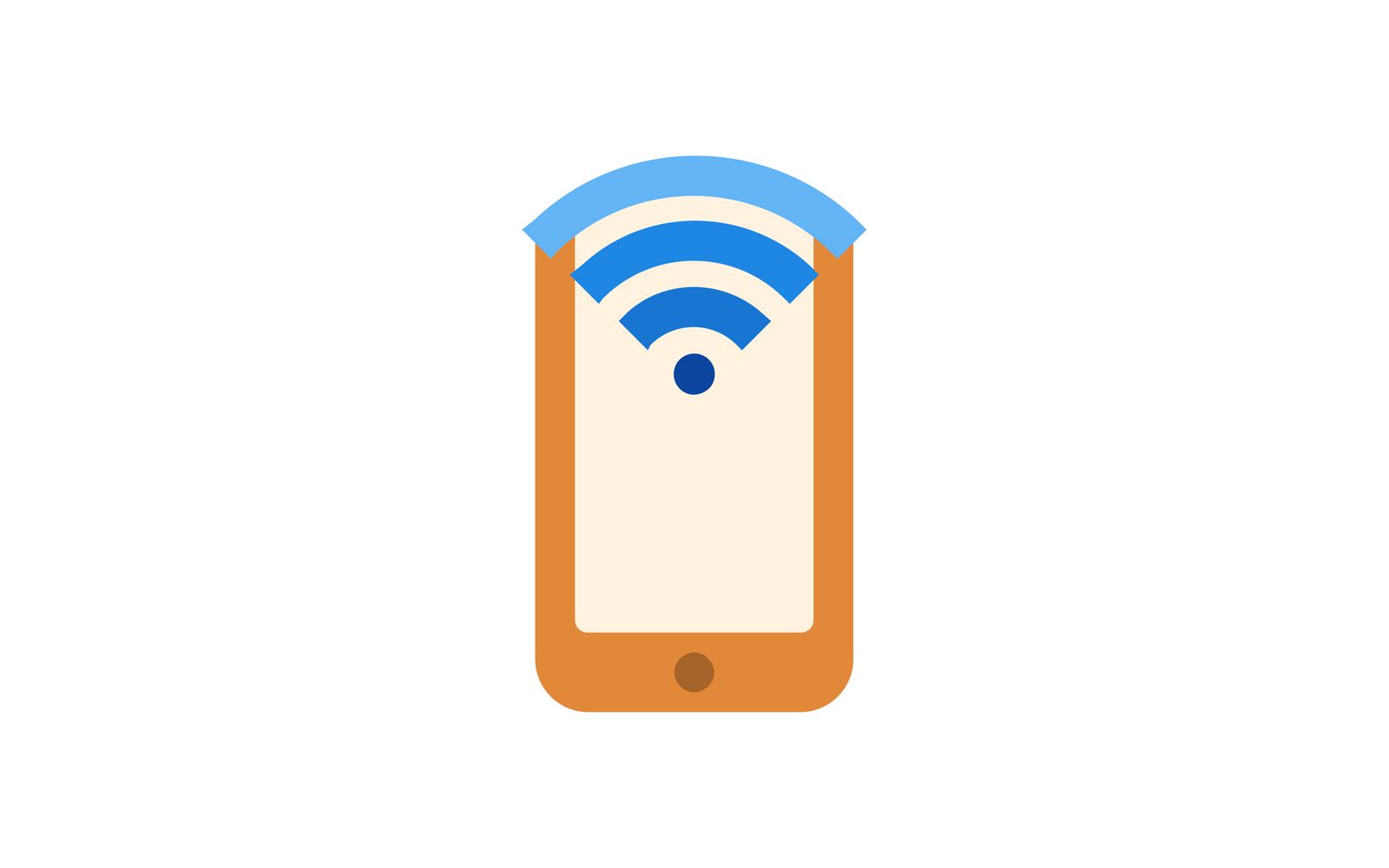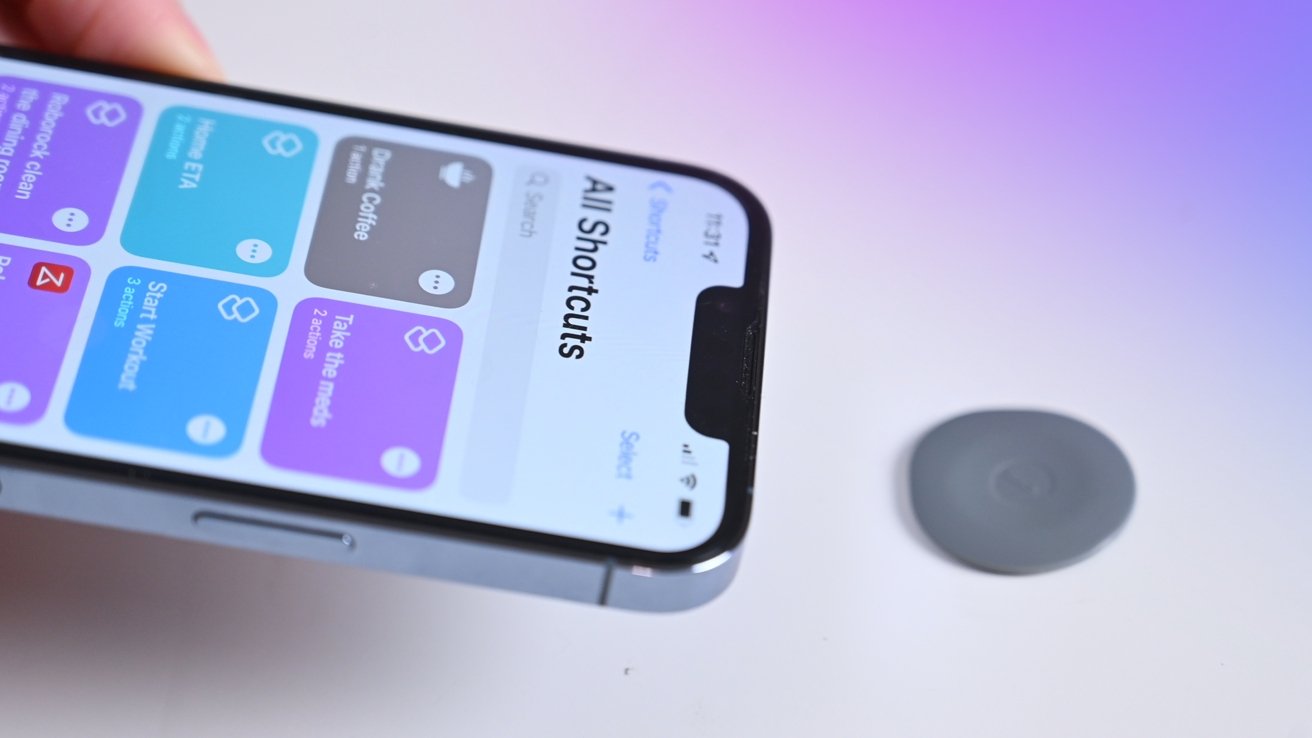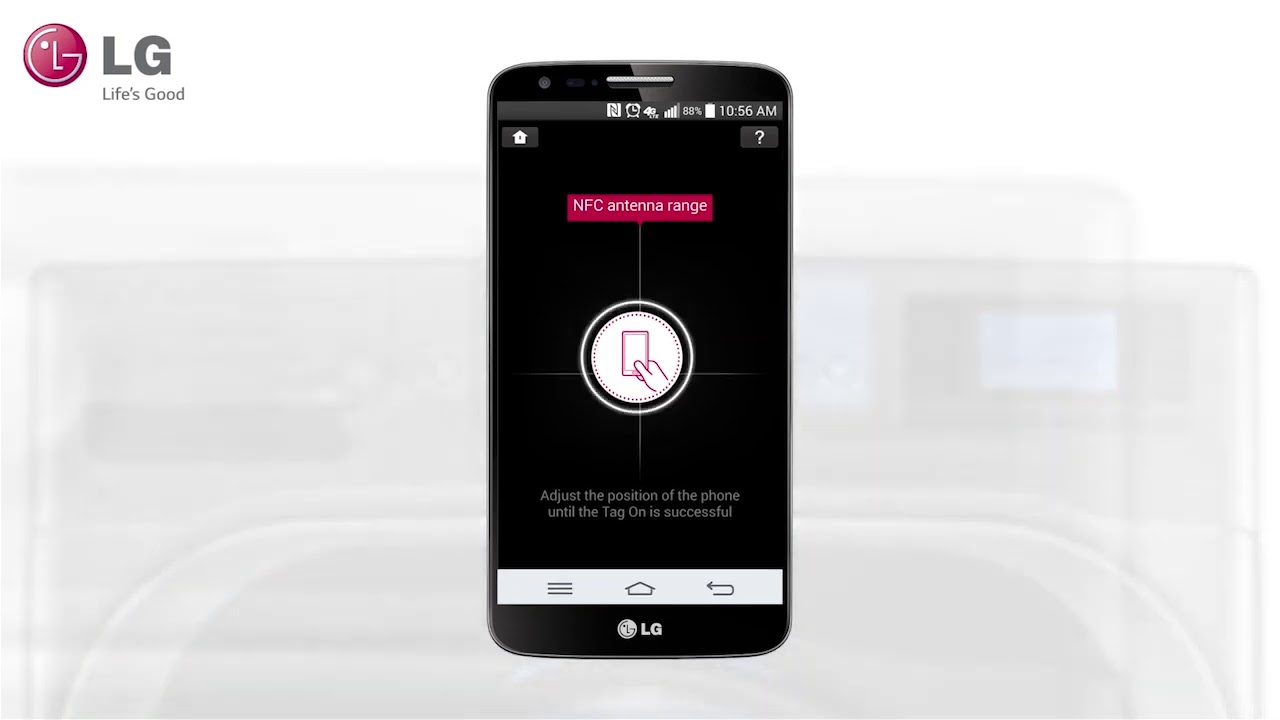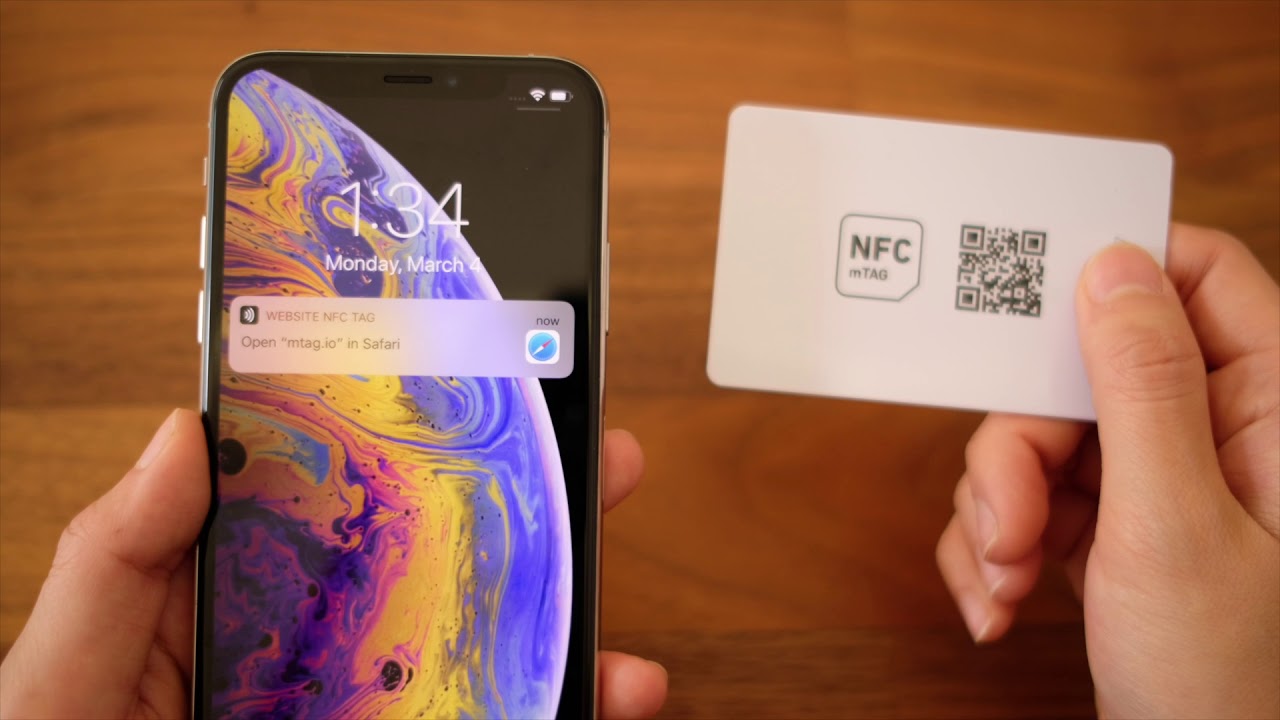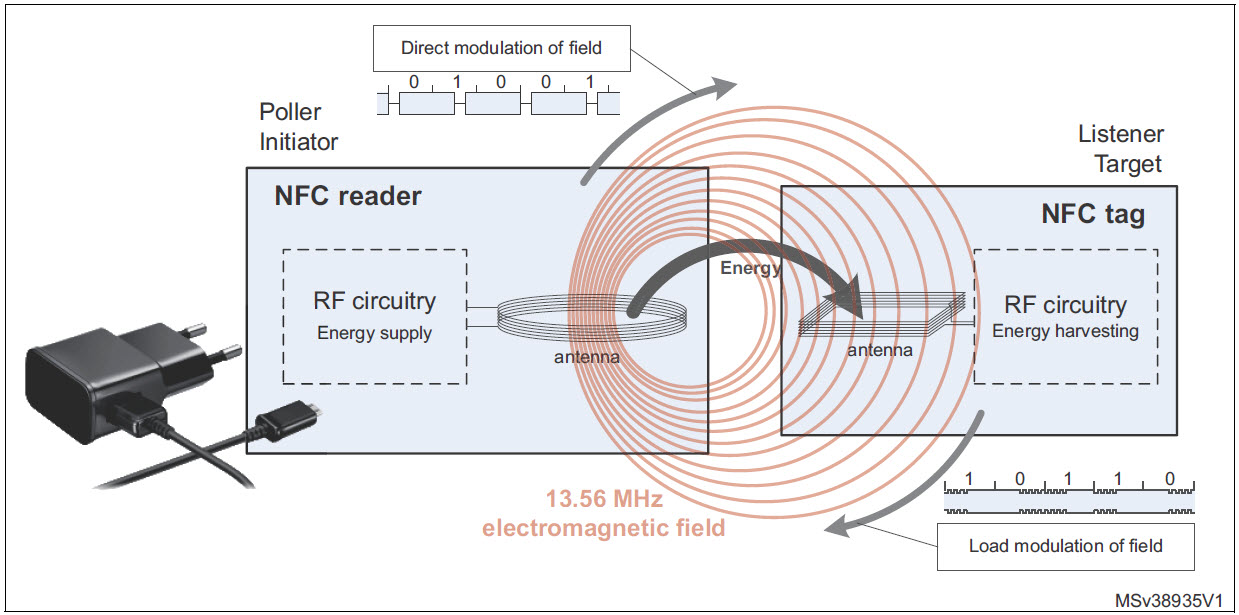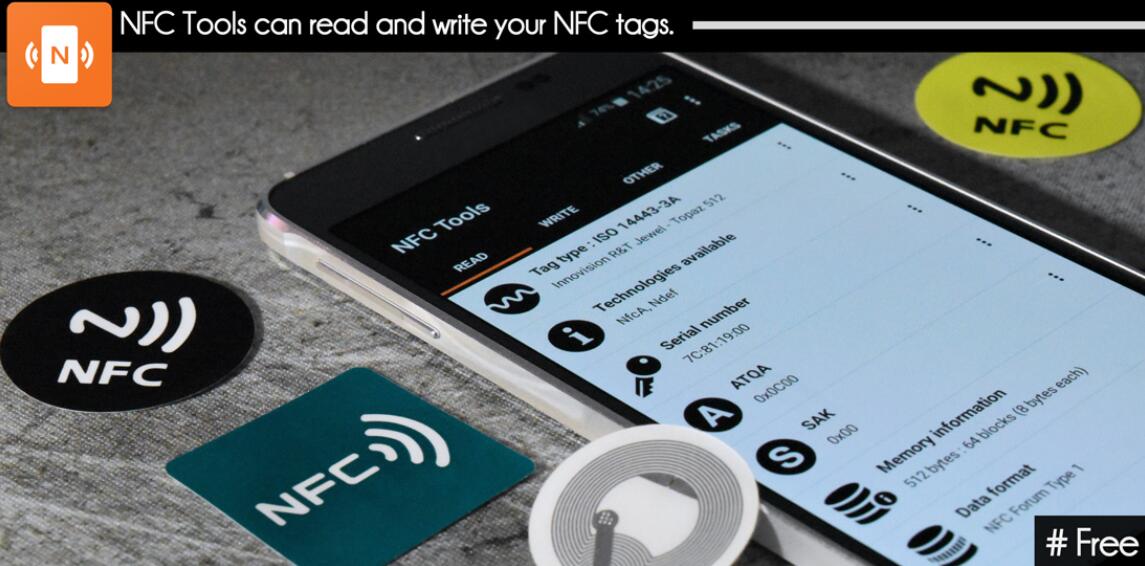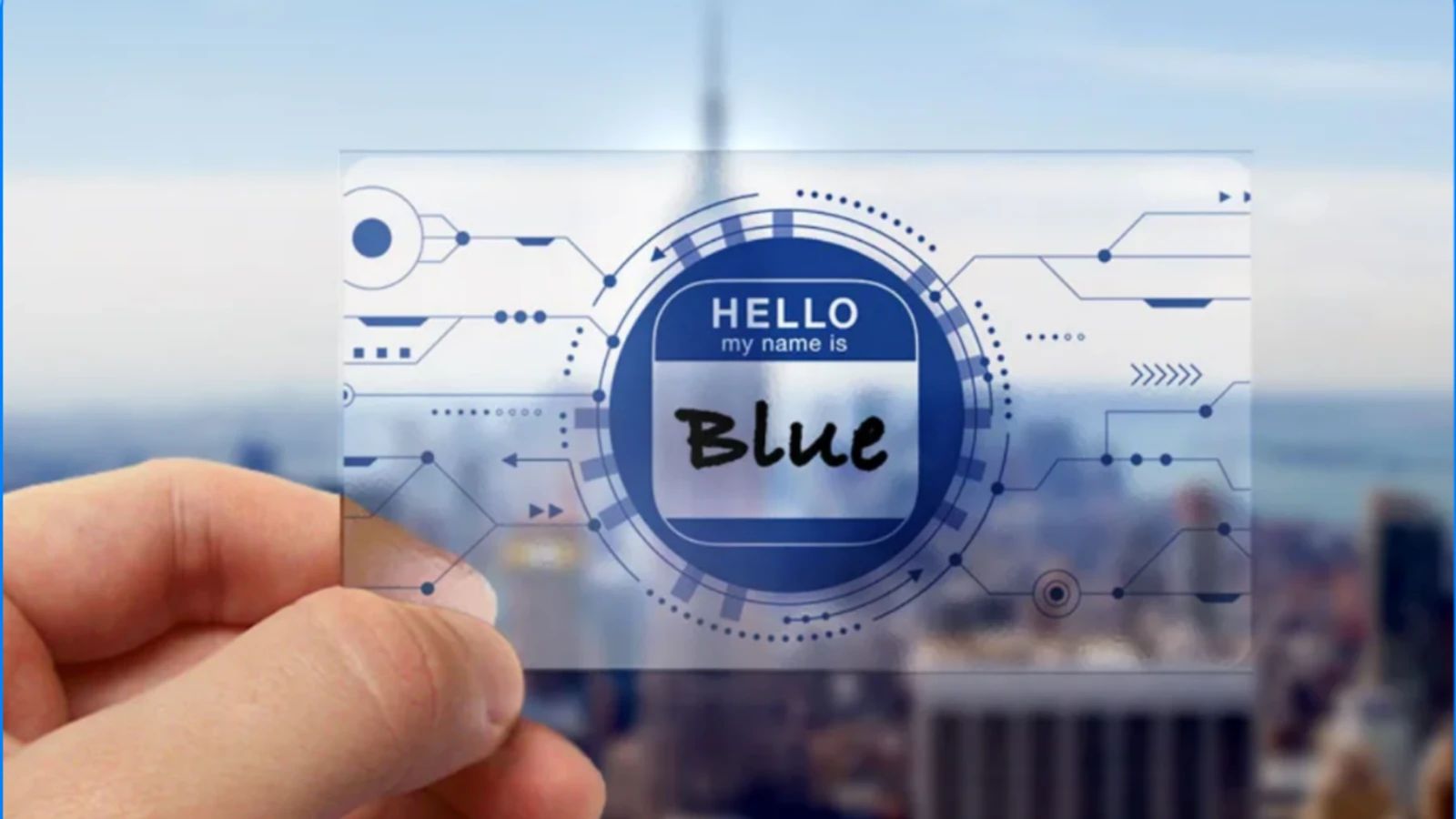Introduction
Welcome to the world of NFC (Near Field Communication) technology! NFC is a wireless communication technology that enables the transfer of data between devices in close proximity. One of the prominent applications of NFC is the use of NFC tags, which are small, passive devices that can store information and be read by NFC-enabled devices
Whether you’re a business owner looking to enhance customer engagement or a tech enthusiast exploring the possibilities of NFC tags, learning how to write an NFC tag can be an invaluable skill. In this article, we’ll take you through the process step by step, guiding you on how to write an NFC tag effectively.
Before we dive into the specifics, it’s essential to understand what an NFC tag is and how it works. NFC tags are small, adhesive stickers or key fobs that contain a microchip and a small antenna. They can be programmed with various types of information or actions, such as opening a website, launching an app, or storing contact details. When an NFC-enabled device comes into close proximity with the tag, it can read the data stored on it.
NFC technology operates on the principle of electromagnetic induction. When an NFC-enabled device, such as a smartphone, is brought near an NFC tag, the device generates a small current in the tag’s antenna, powering the chip. This allows the chip to transmit the stored data back to the device, establishing a connection between the two.
There are different types of NFC tags available in the market, each with its own storage capacity and compatibility. Some common types include NFC Forum Type 1, Type 2, Type 3, and Type 4. The choice of NFC tag depends on the specific requirements of your project, such as the amount of data you need to store and the devices you want to support.
Now that we have a basic understanding of NFC and NFC tags, let’s explore the step-by-step process of writing an NFC tag. We’ll cover everything from selecting the right NFC tag writer app to preparing the content and writing it to the tag.
What is an NFC tag?
An NFC (Near Field Communication) tag is a small, passive device that utilizes the NFC technology to store and transmit information. It consists of a microchip and a small antenna, enclosed in an adhesive sticker or key fob.
The primary purpose of an NFC tag is to enable the transfer of data between an NFC-enabled device and the tag. When the NFC-enabled device comes into close proximity with the tag, it can read the data stored on it or perform specific actions based on the programmed instructions.
NFC tags are versatile and can be used in a wide range of applications. They are commonly used in businesses for marketing and customer engagement purposes. For example, a restaurant may use NFC tags on their menus to provide customers with detailed information about a dish or allow them to place an order directly from their smartphone by simply tapping the tag.
In addition to business applications, NFC tags are also used in personal settings. For instance, NFC tags can be programmed to automate certain tasks on your smartphone. By placing an NFC tag on your bedside table, you can program it to turn on the alarm, dim the lights, and set your phone to silent mode, all with a single tap before going to bed.
One of the notable advantages of NFC tags is their simplicity and passive nature. Unlike active devices that require batteries or complex circuitry, NFC tags do not require a power source. The NFC-enabled device provides the necessary power for the tag to transmit data, making them cost-effective and easy to deploy.
Furthermore, NFC tags can store different types of information, such as URLs, contact details, or even simple commands. They can hold varying amounts of data depending on the type of NFC tag used. NFC Forum Type 1 tags typically have a storage capacity of 96 bytes, while Type 4 tags can store several kilobytes of data.
Overall, NFC tags offer a convenient and efficient way to interact with digital content or trigger actions with a simple tap. Their versatility and ease of use make them suitable for various applications, ranging from marketing and advertising to home automation and personal tasks.
Understanding NFC Technology
Near Field Communication (NFC) is a short-range wireless communication technology that enables devices to establish a connection when they are brought into close proximity (typically within a few centimeters). NFC operates on the principles of electromagnetic induction and is an extension of RFID (Radio Frequency Identification) technology.
NFC technology is characterized by its three distinct modes of operation: peer-to-peer (P2P) mode, read/write mode, and card emulation mode. In P2P mode, two NFC-enabled devices can communicate and exchange data, allowing for seamless file transfer, contact sharing, and even mobile payments.
The read/write mode is where NFC tags come into play. In this mode, an NFC-enabled device, such as a smartphone or tablet, can read the information stored on an NFC tag or write new data onto it. NFC tags can be programmed to trigger specific actions when they are tapped by an NFC device, such as opening a webpage, launching an app, or sharing information.
The card emulation mode allows an NFC-enabled device to function as a contactless smart card, enabling it to interact with other NFC-enabled devices or contactless card readers. This mode is commonly used for mobile payment systems, where the smartphone emulates a contactless payment card, allowing users to make secure, contactless transactions.
NFC technology operates at a frequency of 13.56 MHz and has a maximum data transfer rate of 424 kbps (kilobits per second). This low frequency ensures that the communication range remains short, making NFC a secure and reliable method of data transfer.
When it comes to security, NFC technology incorporates various measures to protect sensitive information. For example, NFC uses encryption algorithms to secure the communication between devices, preventing unauthorized access or data interception. Additionally, NFC devices require physical proximity for communication, reducing the risk of remote attacks.
NFC technology has gained widespread adoption and is supported by a vast number of devices and platforms. Many smartphones, tablets, and wearable devices come with built-in NFC functionality, allowing users to take advantage of the benefits it offers.
Applications of NFC technology extend beyond consumer electronics. Industries such as healthcare, transportation, and logistics are utilizing NFC for tasks like patient monitoring, access control, and inventory management. The simplicity, convenience, and versatility of NFC make it a valuable tool in various domains.
Types of NFC Tags
NFC (Near Field Communication) tags come in various types, each offering different storage capacities and functionalities. Understanding the different types of NFC tags available in the market is crucial for selecting the right tag for your specific use case. Here are some common types of NFC tags:
- NFC Forum Type 1: These tags have a storage capacity of 96 bytes and are typically used for simple tasks like opening a website or displaying a small amount of text. They are suitable for applications where a small amount of data needs to be stored.
- NFC Forum Type 2: Type 2 tags have a storage capacity ranging from a few kilobytes to a few megabytes, depending on the manufacturer. They are commonly used in applications such as product identification, marketing, and access control. Type 2 tags are compatible with a wide range of NFC devices and offer a good balance between storage capacity and cost.
- NFC Forum Type 3: Type 3 tags, also known as FeliCa cards, are commonly used in Japan and offer larger storage capacities than Type 1 and Type 2 tags, typically ranging from a few kilobytes to a few megabytes. They are often used for public transportation systems, e-money applications, and other contactless payment methods.
- NFC Forum Type 4: Type 4 tags offer the largest storage capacity among the NFC tag types, ranging from several kilobytes to several megabytes. They are suitable for advanced applications that require more extensive data storage, such as interactive advertisements, smart posters, or complex data collection. Type 4 tags also support encryption algorithms, making them suitable for secure applications.
- Custom NFC Tags: In addition to the standard NFC tag types, there are also custom NFC tags available in the market. These tags may have unique form factors, designs, or additional features, catering to specific industry requirements. Custom NFC tags are often used in brand promotion, event management, and personalized applications.
When selecting an NFC tag, it’s essential to consider factors such as storage capacity, compatibility with NFC devices, cost, and the specific requirements of your application. It’s also worth noting that NFC tags can be rewritable or read-only, depending on the tag type and manufacturer.
It’s important to select NFC tags that are compatible with the devices you intend to use. Most NFC-enabled devices support multiple NFC tag types, but it’s always recommended to check the device specifications or conduct compatibility tests before making a bulk purchase.
Understanding the different types of NFC tags available will help you make an informed decision and ensure that you choose the right tag to meet your specific needs, whether it’s for marketing, access control, payment systems, or any other NFC-enabled application.
Step-by-Step Guide on How to Write an NFC Tag
Writing an NFC (Near Field Communication) tag involves a simple and straightforward process. By following these step-by-step instructions, you can effectively write data onto an NFC tag:
- Select the NFC tag writer app: Start by choosing an NFC tag writer app that is compatible with your device’s operating system. There are several free and paid apps available in app stores, such as NFC Tools, Trigger, or NFC TagWriter by NXP. Download and install the app of your choice.
- Prepare the content: Determine what content or action you want to program onto the NFC tag. This could be a URL, contact information, a pre-written message, or an app-triggering command. Prepare the content in the required format, such as a URL link or a vCard contact file.
- Open the NFC tag writer app: Launch the NFC tag writer app on your device. Ensure that NFC is enabled in your device settings.
- Choose the write option: Within the app, select the option to write data onto the NFC tag. This may be labeled as “Write” or “Program” depending on the app you are using.
- Hold the NFC tag near your device: Position the NFC tag close to the NFC antenna area of your device. The NFC antenna is typically located on the back or the top of the device, near the camera or logo. Ensure that the tag and the device are in close proximity, usually within a few centimeters.
- Follow the prompts: The NFC tag writer app will guide you through the writing process. It may prompt you to confirm the action, select the type of data you want to write, or specify the content source. Follow the on-screen instructions and prompts accordingly.
- Tap the NFC tag: Once you are ready to write the data onto the NFC tag, tap the tag against the NFC antenna area of your device. Ensure that the tag remains in contact with the device until the writing process is complete. The app may provide a visual or audible indication when the writing process is finished.
- Test the NFC tag: After writing the data onto the NFC tag, test it using an NFC-enabled device to ensure that the programmed action or information is working as intended. Simply bring another NFC-enabled device near the tag and observe the desired outcome.
By following these simple steps, you can successfully write data onto an NFC tag and utilize its functionality in various applications. Take the time to explore different NFC tag writer apps and experiment with different types of content to unleash the full potential of NFC technology.
Choosing the Right NFC Tag Writer App
When it comes to writing data onto NFC (Near Field Communication) tags, selecting the right NFC tag writer app is essential for a smooth and successful experience. With a wide range of apps available, here are some factors to consider when choosing the app that suits your needs:
- Compatibility: Ensure that the NFC tag writer app is compatible with your device’s operating system. Most apps are available for both Android and iOS platforms, but it’s important to double-check to avoid compatibility issues.
- User Interface: Look for an app with an intuitive and user-friendly interface. The app should have clear navigation and provide easy access to essential writing functions. A cluttered or complicated interface can make the writing process more challenging.
- Functionality: Consider the features and functionalities offered by the app. Look for features such as the ability to write different types of data (URLs, contact information, text messages, etc.), support for different NFC tag types, and the option to customize and edit the programmed data.
- Reviews and Ratings: Read reviews and check the ratings of the app to get an idea of its reliability and performance. Pay attention to user feedback regarding ease of use, stability, and compatibility with different NFC tags and devices.
- Additional Features: Some NFC tag writer apps offer additional features that can enhance your NFC experience. These may include the ability to read and analyze the content of existing NFC tags, support for NFC automation, or integration with other apps or services.
- Developer Support: Consider the level of support provided by the app developer. A reputable developer will regularly update the app, fix any bugs or issues, and provide responsive customer support if you encounter any problems while using the app.
- Ease of Sharing: Check if the app allows you to easily share programmed NFC tags with others. This can be in the form of import/export functionality, cloud syncing, or sharing options through messaging apps or email. This feature can be helpful for collaboration or transferring NFC tags between devices.
It’s important to note that while there are many free NFC tag writer apps available, some apps may offer additional features or advanced functionalities through in-app purchases or premium versions. Consider your specific requirements and budget when deciding if you need to opt for a free or paid app.
Lastly, keep in mind that NFC tag writer apps are constantly evolving, with new features and improvements being released over time. Stay updated with the latest versions of the app to benefit from the newest features and ensure compatibility with the latest NFC standards.
By considering these factors and researching different NFC tag writer apps, you can choose the app that best suits your needs and preferences, making the process of writing data onto NFC tags efficient, convenient, and enjoyable.
Preparing the Content for Your NFC Tag
Before writing data onto an NFC (Near Field Communication) tag, it’s important to properly prepare the content that you want to program onto the tag. This preparation ensures that the information is formatted correctly and optimized for the intended purpose. Here are some key considerations when preparing content for your NFC tag:
- Define the Objective: Clearly define the goal or purpose of the NFC tag. Identify what kind of information or action you want to program onto the tag. This could be a website URL, contact details, a pre-written message, app automation, or any other desired outcome.
- Choose the Right Format: Different NFC tag writer apps support different types of content formats. Ensure that you choose the format that is compatible with your chosen app and can be recognized and utilized by the NFC-enabled devices you intend to use.
- Text-Based Content: If your content includes text, make sure it is concise and clear, as NFC tags have limited storage capacity. Avoid lengthy paragraphs and focus on conveying the most important information. Proofread the text to ensure it is error-free.
- URLs and Links: If you plan to program a URL or link onto the NFC tag, ensure that it is a valid and accessible link. Test the link on different devices and browsers to confirm its functionality. Consider using link shortening services if the URL is long to save space on the tag.
- Contact Information: If you want to include contact details on the NFC tag, consider using a vCard format. This allows users to easily add the contact information to their address book with a single tap on the NFC-enabled device.
- App Triggers: For app automation or triggers, ensure that the desired app is installed on the NFC-enabled device. Identify the specific command or action you want to program and make sure it is supported by the NFC tag writer app you are using.
- Media Content: NFC tags can also store various media content like images, audio files, or videos. Ensure that the media files are appropriately sized and optimized for compatibility with NFC-enabled devices. Compressing images or converting audio/video files to compatible formats can help reduce file size without compromising quality.
- Localization: If your target audience includes people from different regions or languages, consider localizing the content on the NFC tag. This could involve providing translations or adapting the information to match cultural or regional preferences.
- Test and Verify: Before writing the content onto the NFC tag, test and verify it using simulators or virtual NFC tag testing tools. This allows you to ensure that the content is correctly formatted and functions as intended, minimizing errors during the writing process.
By carefully preparing the content for your NFC tag, you can ensure that it effectively delivers the desired information or action. Taking these steps will help optimize the user experience and ensure that the NFC-enabled devices can easily and accurately read and utilize the programmed content.
Writing the Content to the NFC Tag Using an App
Once you have prepared the content for your NFC (Near Field Communication) tag, the next step is to write or program the content onto the tag using an NFC tag writer app. Here is a step-by-step process to guide you through writing the content onto the NFC tag:
- Open the NFC Tag Writer App: Launch the NFC tag writer app on your device. Ensure that NFC is enabled in your device settings.
- Select the “Write” or “Program” Function: Within the app, choose the option to write or program data onto an NFC tag. This function might be labeled differently depending on the app you are using.
- Place the NFC Tag Near the Device: Position the NFC tag in close proximity to the NFC antenna area of your device. The exact location of the NFC antenna may vary depending on your device, but it is usually near the camera or logo.
- Choose the Content Source: Select the source of the content you want to write onto the NFC tag. This can include options such as entering text manually, importing from a file, or selecting from predefined templates.
- Enter or Import the Content: Depending on the selected content source, enter the relevant information manually or import it from a file or template. Ensure that the content is correctly formatted and accurate before proceeding.
- Review and Confirm: Carefully review the programmed content on the screen of your device to verify its accuracy. Check for any potential errors, misspellings, or incorrect formatting.
- Initiate the Writing Process: Tap the “Write” or “Program” button within the app to initiate the writing process. Be sure to keep the NFC tag in close proximity to the device until the process is completed.
- Wait for Confirmation: The app may provide a visual or audible indication when the writing process is finished. Wait for the confirmation message or signal to ensure that the content has been successfully written onto the NFC tag.
- Test the NFC Tag: After writing the content onto the NFC tag, test it using an NFC-enabled device to ensure that the programmed action or information is working as intended. Bring another NFC-enabled device near the tag and observe the desired outcome.
It’s important to note that the specific steps and functions may vary slightly depending on the NFC tag writer app you are using. However, most apps follow similar principles and provide clear instructions within the app itself.
Remember to always check the compatibility of the app with your NFC-enabled device and ensure that you are using the latest version of both the app and the device’s operating system. Keeping your apps and device updated will help ensure compatibility and optimal performance.
By following these steps, you can confidently write the prepared content onto the NFC tag using an NFC tag writer app, allowing you to leverage the power of NFC technology and unlock the potential of your NFC-enabled devices.
Tips for Successful Writing of an NFC Tag
Writing data onto an NFC (Near Field Communication) tag requires attention to detail and consideration of various factors to ensure a successful outcome. Here are some tips to help you achieve a successful writing process when working with NFC tags:
- Choose High-Quality NFC Tags: Invest in high-quality NFC tags from reputable manufacturers. Quality tags ensure better performance, durability, and compatibility with a wide range of NFC-enabled devices. Cheap or low-quality tags may lead to unreliable writing or reading experiences.
- Avoid Metal Surfaces: NFC technology operates based on electromagnetic induction. Metal surfaces can interfere with the communication between the NFC tag and the NFC-enabled device. When choosing the placement of the NFC tag, avoid metal surfaces for optimal performance.
- Position the NFC Tag Correctly: Ensure that the NFC tag is positioned correctly near the NFC antenna area of your device. The location of the NFC antenna may vary depending on your device, so refer to the device’s user manual or consult the NFC tag writer app for guidance on proper placement.
- Ensure Good Contact: Maintain good contact between the NFC tag and your device during the writing process. Hold the tag steady and avoid any movement or interruptions that may disrupt the communication. Ensure that the tag remains in contact until the writing process is complete.
- Test with Multiple Devices: After writing the NFC tag, test it with multiple NFC-enabled devices to ensure compatibility and consistent performance. Different devices may have slight variations in NFC functionality, so testing with various devices can help identify any inconsistencies or issues.
- Check Content Length: Keep in mind the limited storage capacity of NFC tags. Be mindful of the content length, especially when including large amounts of text or media files. If necessary, consider using shorter URLs or compressing media files to optimize space on the tag.
- Be Mindful of Security: If your content includes sensitive information, such as passwords or personal data, consider encryption or secure NFC tag options. Explore advanced NFC tag writer apps that offer encryption features to protect confidential information from unauthorized access.
- Protect NFC Tags: NFC tags are susceptible to physical damage and environmental factors. Protect your NFC tags from exposure to extreme temperatures, moisture, and physical impact. Consider using protective cases or covers to extend the lifespan of the tags.
- Keep NFC Tag Information Up-to-Date: If you are using NFC tags for content that may change over time, such as event information or discount codes, regularly update the information stored on the tag to ensure its relevance and accuracy. This can be easily done using NFC tag writer apps.
- Stay Informed and Experiment: Stay updated with the latest advancements and developments in NFC technology. Explore different NFC tag writer apps, experiment with various content types, and keep exploring the possibilities that NFC tags offer.
By following these tips, you can enhance the success rate of writing NFC tags and ensure a reliable and effective NFC experience. Paying attention to details, using high-quality tags, and staying informed about best practices will help you make the most out of NFC technology.
Conclusion
Writing data onto an NFC (Near Field Communication) tag is a valuable skill that allows you to unlock the full potential of NFC technology. By following the step-by-step guide, understanding the types of NFC tags, choosing the right NFC tag writer app, and preparing the content properly, you can successfully write customized information onto NFC tags. These tags can then be used in various applications such as marketing, customer engagement, automation, and more.
NFC technology offers a convenient and secure way to transfer data and trigger actions by simply tapping an NFC-enabled device on an NFC tag. With a wide range of NFC tag types available, you can select the one that suits your specific requirements in terms of storage capacity and compatibility.
Remember to choose a reliable NFC tag writer app that is compatible with your device and offers the features you need. Taking the time to properly prepare the content, ensuring its accuracy and formatting, will optimize the performance of the NFC tags and enhance the user experience.
Additionally, by following the tips for successful writing, you can overcome potential challenges, ensure compatibility, and maximize the effectiveness of the programmed NFC tags. Taking precautions such as avoiding metal surfaces, maintaining good contact, and testing with multiple devices will help achieve consistent and reliable results.
With the increasing adoption of NFC technology in various industries and the ease of use it offers, the possibilities are endless. Whether you’re a business owner looking to enhance customer engagement or a tech enthusiast exploring the potential of NFC, mastering the skill of writing NFC tags opens up exciting opportunities.
So, don’t hesitate to dive into the world of NFC technology, experiment with different NFC tag writer apps, and unleash the power of personalized and interactive communication through NFC tags.







